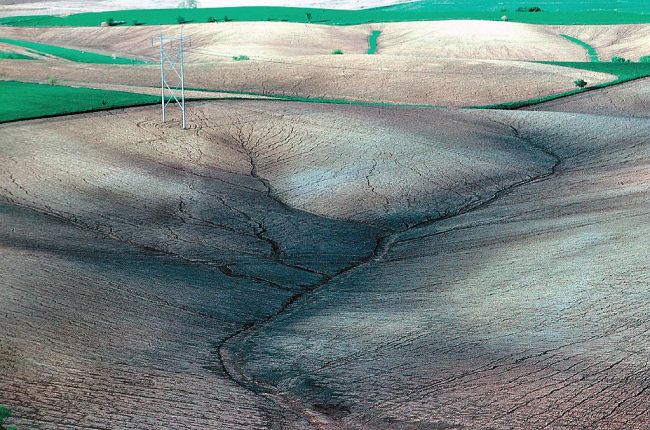
Water or air that moves over a soil surface applies forces to the soil particles on the surface. If the forces are large enough, they move the particles. The stronger the current or wind, the more particles are put into motion. Larger and heavier particles tend to roll or hop near the soil surface. Finer and lighter particles are carried upward from the soil surface. In nature, the finest particles may be carried for hundreds or even thousands of kilometers high in the atmosphere before they fall out!
Soil erosion is a serious problem in many areas of the world. Soil takes thousands of years to form, but much of it can be eroded by just a few unusually heavy rainstorms or strong winds. Bare soil surfaces are very likely to be eroded by a sudden heavy rainstorm. The running water can cut a channel, called a gully, in the soil surface. Once the gully is cut, the force of the water is focused there. This deepens the channel. One very good way to reduce soil erosion is to keep the soil surface covered with vegetation. Another way is to plant crops in rows that follow the contours of the land surface rather than running up and down a slope.



